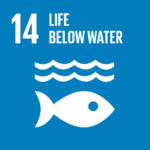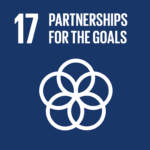Nature-Based Solutions (NBS), projects that bolster nature’s carbon capture and storage, are rapidly gaining recognition as a key tool for climate and biodiversity action.
Mother Earth’s most robust weapon against climate change is the ocean, the world’s largest carbon sink, which also shelters a vibrant array of biodiversity. The role of blue carbon in the battle against climate change is frequently overlooked. As leading marine biologist Carlos Duarte from King Abdullah University of Science and Technology (KAUST) points out, a shocking 38% of greenhouse gases (GHGs) stem from the destruction of ecosystems. This highlights that up to a third of the climate crisis solution can come from restoring our natural environments.
RELEVANT SUSTAINABLE GOALS



Nature-Based Solutions For Ocean Conservation
Nature-Based Solutions (NBS), projects that bolster nature’s carbon capture and storage, are rapidly gaining recognition as a key tool for climate and biodiversity action. In a world progressively focusing on reducing carbon emissions and promoting biodiversity, blue NBS, including seagrass meadows, mangrove forests, and protected whale migration routes, could provide a crucial piece of the puzzle.
At the 10th World Ocean Summit, leading voices in the field agreed that the most effective NBS are community-led. Locally driven projects can simultaneously tackle major socio-economic issues like poverty and gender inequality. However, they cautioned that NBS should prioritize biodiversity restoration, not just generating carbon credits, as blue-carbon accounting and credits are still developing areas.
Mother Earth’s most robust weapon against climate change is the ocean, the world’s largest carbon sink, which also shelters a vibrant array of biodiversity. The role of blue carbon in the battle against climate change is frequently overlooked. As leading marine biologist Carlos Duarte from King Abdullah University of Science and Technology (KAUST) points out, a shocking 38% of greenhouse gases (GHGs) stem from the destruction of ecosystems. This highlights that up to a third of the climate crisis solution can come from restoring our natural environments.
Investors eyeing NBS should consider the community engagement level in a project’s design and execution. Duarte explains that a successful project needs to maintain carbon sequestration for a hundred years, equating to three human generations. Hence, ensuring local community commitment is paramount. Nevertheless, building trust can be challenging, especially with Indigenous and tribal groups who might have experienced exploitation or displacement due to Western interests.
Co-Create With Local Communities and Collaborate
Co-benefits play a crucial role in this respect. This involves not only recognizing the carbon advantages of these projects, especially when working with Indigenous communities, but also considering a wider range of benefits. This broader view of conservation and ecosystem restoration could spur sustainable tourism and fisheries activities, as evidenced by a project in Nunavut, the Canadian Arctic.
Olivier Wenden, Vice President, and CEO at the Prince Albert II of Monaco Foundation, a charity that donates millions to environmental projects, also emphasized that NBS designed in collaboration with local communities can disprove the notion that NBS or blue carbon are merely carbon offsetting methods for organizations.
There’s a caution in seeing NBS as a magical cure-all for climate change and biodiversity loss. NBS must center on biodiversity protection and warn against the risk of turning our oceans into carbon farms rather than preserving their ecological functioning.
Governments can promote biodiversity-first NBS through various means, like issuing blue bonds for ecosystem restoration or collaborating with philanthropic organizations to finance conservation in specific regions. They also have a crucial role in regulating blue-carbon investment to avoid accounting or planning issues inherent in a new industry.
Quantifying blue carbon and NBS ecosystems poses significant challenges, such as migratory species and even stationary oceanic flora like seagrass and kelp. To tackle these, Vanga Blue Forest’s project coordinator, Mwanarusi Mwafrica, suggests bundling NBS initiatives, like seagrass and mangroves, so when a definitive accounting methodology becomes available, it will provide additional financial gains.
The race to counter climate change has taken us to the heart of the oceans, and it’s clear that blue Nature-Based Solutions can be a game-changer. They offer an integrative approach, bringing together biodiversity conservation, climate change mitigation, and community development. We should not underestimate the power of the blue.


